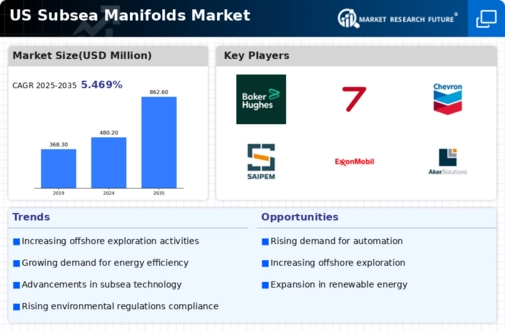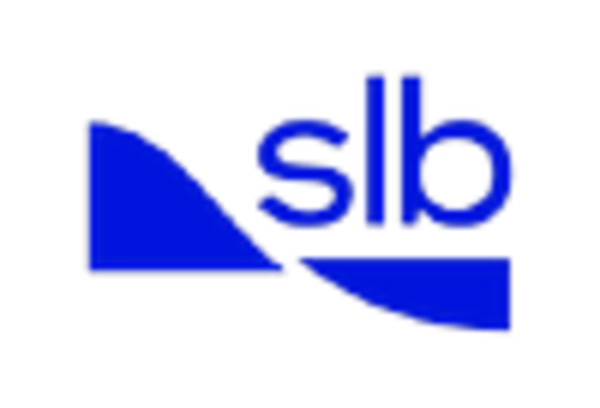Rising Offshore Exploration Activities
The subsea manifolds market is experiencing growth due to the increasing offshore exploration activities in the US. As oil and gas companies seek to tap into untapped reserves, the demand for subsea infrastructure, including manifolds, is likely to rise. The US Energy Information Administration (EIA) indicates that offshore production accounts for a significant portion of the country's total oil output. This trend suggests that investments in subsea technologies will continue to expand, driving the subsea manifolds market. Furthermore, the need for efficient and reliable subsea systems to manage production from deepwater fields is becoming more pronounced, potentially leading to a surge in manifold installations. The subsea manifolds market is thus poised to benefit from these exploration initiatives, as operators require advanced solutions to optimize production and ensure safety in challenging environments.
Increased Demand for Enhanced Oil Recovery
The subsea manifolds market is likely to see a boost from the rising demand for enhanced oil recovery (EOR) techniques in the US. As conventional oil reserves deplete, operators are turning to EOR methods to maximize extraction from existing fields. This shift necessitates the deployment of advanced subsea systems, including manifolds, to facilitate the complex processes involved in EOR. According to the EIA, EOR techniques can increase recovery rates by up to 15-20%, making them an attractive option for operators. The subsea manifolds market is thus positioned to grow as companies invest in technologies that support EOR initiatives. The integration of subsea manifolds into EOR strategies not only enhances production efficiency but also aligns with the industry's focus on sustainability and resource optimization.
Technological Innovations in Subsea Systems
Technological innovations are playing a crucial role in shaping the subsea manifolds market. The advent of advanced materials, automation, and digital technologies is enhancing the performance and reliability of subsea systems. Innovations such as real-time monitoring and predictive maintenance are becoming increasingly important for operators seeking to minimize downtime and optimize production. The subsea manifolds market is likely to benefit from these advancements, as they enable more efficient management of subsea assets. Furthermore, the integration of artificial intelligence and machine learning into subsea operations could lead to improved decision-making processes, thereby enhancing overall operational efficiency. As these technologies continue to evolve, they may drive further investments in subsea manifold solutions, positioning the market for sustained growth.
Growing Focus on Environmental Sustainability
The subsea manifolds market is influenced by the growing focus on environmental sustainability within the energy sector. As regulatory bodies and stakeholders emphasize the importance of reducing carbon footprints, operators are increasingly adopting technologies that minimize environmental impact. Subsea manifolds, designed for efficient resource extraction with reduced emissions, align with these sustainability goals. The US government has introduced various initiatives aimed at promoting cleaner energy practices, which may further drive the adoption of subsea technologies. The subsea manifolds market is likely to see increased demand as companies seek to comply with environmental regulations while maintaining operational efficiency. This trend suggests a shift towards more sustainable practices in subsea operations, potentially leading to innovations that enhance both performance and environmental stewardship.
Investment in Subsea Infrastructure Development
Investment in subsea infrastructure development is a key driver for the subsea manifolds market. As the US energy landscape evolves, there is a growing need for robust subsea systems to support exploration and production activities. The government and private sector are increasingly allocating funds towards the development of subsea infrastructure, including pipelines, manifolds, and other essential components. According to industry reports, investments in subsea infrastructure are projected to reach several billion dollars over the next few years. This influx of capital is likely to stimulate growth in the subsea manifolds market, as operators seek to enhance their capabilities and ensure the reliability of their subsea operations. The emphasis on modernizing and expanding subsea infrastructure may lead to increased demand for advanced manifold solutions, further propelling market growth.

















Leave a Comment